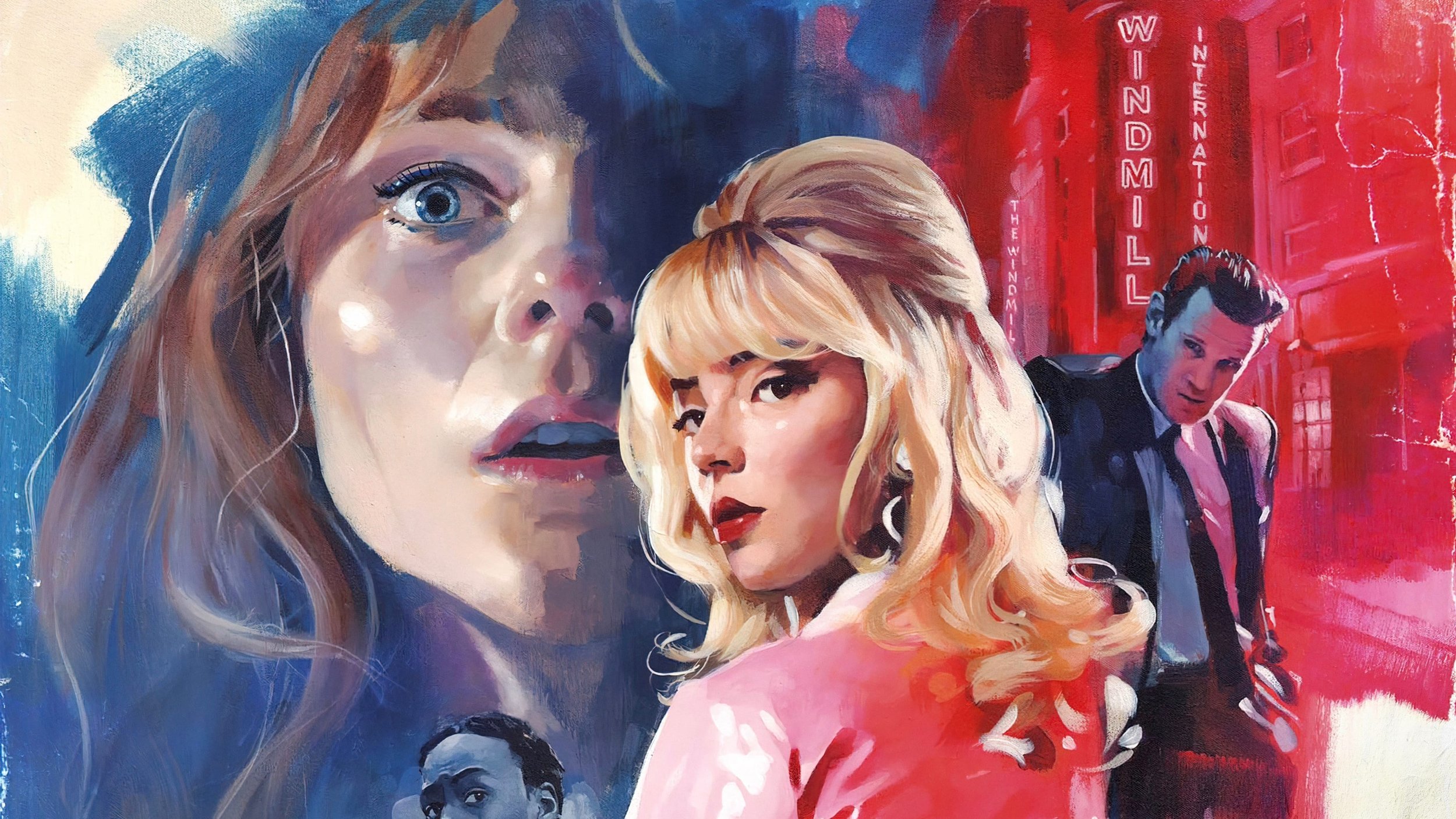Last Night in Soho
UniversalEver since Edgar Wright entered the mainstream with Shaun of the Dead in 2004, he has proven time and time again that he is one of the most energetic and blisteringly original voices working today. Known for his incredibly fast-paced editing and dry sense of humor, Wright’s films are some of the most fun cinematic experiences audiences can have. Last Night in Soho, however, is a stylistic pivot in more ways than just one. It represents Wright’s stab at the horror genre as he takes from several influences to make something that’s part Polanski, part Giallo, and part classic Edgar Wright. It’s not a perfect film by any means, but it swings for the fences and succeeds far more than it misses.
Last Night in Soho revolves around Eloise Turner (Thomasin McKenzie), a young woman who gets accepted into a fashion design school in London. After renting an apartment, she begins to have incredibly vivid dreams about the city in the 1960’s that all revolve around a girl named Sandie (Anya-Taylor Joy), and this plunges her down a rabbit hole of mystery and murder that proves far more perilous than initially thought.
This is a film that would flounder without a strong lead actress, and luckily McKenzie handily carries it on her shoulders. If it wasn’t clear enough from Jojo Rabbit, she is a star in the making. The innocence and vulnerability that she brings to the role is vital in making the character sympathetic. She nails the mannerisms of someone suffering from anxiety and other like mental disorders, and as she’s put through the terrifying ringer, it’s next to impossible to not feel something for her. Joy continues to impress, as well, giving what could potentially be an underwritten character a blast of passion and energy that truly brings them to life. Her portrayal of innocence lost, shown in flashes through her wide-eyed gaze, frantic dancing, and haunting singing, lingers after the film has concluded. Every character that she plays feels entirely different than the last, and if she continues on at the pace she is going, she could be one of the standout actors of this generation. Matt Smith is solid as a seedy member of the 60s underworld, but he doesn’t get much to do comparatively. He feels wasted with the minimal amount of screen time allotted to him, rendering his character one-note and forgettable. Diana Rigg, who sadly passed away in 2020, gives a very memorable final performance that shows why she was a true talent. Her mysterious presence enlivens every conversion she is a part of, and her and McKenzie share good screen chemistry.
Edgar Wright’s direction is once again fantastic. It’s not nearly as flashy as his previous efforts, but that’s not to say that it’s bland by any means. Last Night in Soho is drenched in an intoxicating style, with neon lights illuminating seedy back alleys and ghostly apparitions casting shadows – both literal and metaphorical. Production designer Marcus Rowland adds much needed texture to the sets, making it feel like a lived-in place. This vivid world is captured beautifully by cinematographer Jeong Jeong-hun, who creates many dream-like visuals that turn nightmarish. In particular, his use of mirror shots showing the two lead actresses mirroring each other are immaculate. The editing by frequent Wright-collaborator Paul Machliss is fantastic, with sharp and purposeful transitions between scenes, great use of hidden cuts, and a brilliant sense of flow. This further improves upon the dream-like quality. Characters will run through a doorway and be in a completely different location, and tricks like this help to condense the narrative and spruce up the pacing. One of the highlights of the film is a dance sequence where the two lead actresses dance with Matt Smith in a faux one take. Every time one actress leaves the frame, the other one will take her place. It’s an incredibly accomplished technical achievement that consistently feels fresh and organic in terms of the dreamscape Wright has envisioned with his latest feature.
The script, co-written by Wright and Krysty Wilson-Cairns, is far from poor but stands as the weakest part of the package. The tackling of themes related to sexism and nostalgia are well-executed and the narrative has a solid momentum, but the problems start to creep in when looking at the supporting characters, who remain one-dimensional stereotypes throughout. Synnove Karlsen portrays Joscasta, Eloise’s college roommate, and she stands as one of the most cliched bully/mean girl characters in recent memory. Every line out of her mouth is so venomous and mean that all subtlety is thrown out the window whenever she’s on-screen. Sadly, the plot is quite predictable, and while that’s not a dealbreaker, per se, in terms of entertainment value of the feature overall, Wright and co-writer Krysty Wilson-Cairns have attempted to hide their hand by adding more layers to the mystery element in order to craft more depth than this story needs. Certain characters exist solely to be obvious red herrings for the mystery, and it comes across as extremely forced and unnatural in terms of immersion. Ultimately, needing a few stronger personalised characters in the present timeline to keep viewers on their toes and guessing in terms of narrative immersion.
Last Night in Soho is not one of Edgar Wright’s strongest cinematic efforts, but that’s simply because the bar has been set so ridiculously high in terms of his previous cinematic exploits. Despite its narrative and character-related flaws, Last Night in Soho remains a blast from beginning to end, as it hosts an excellent breakout cast with Taylor-Joy and McKenzie. The feature looks absolutely stunning and is a treat to see on the big screen with strong visuals and unique iconography, and yet despite its clear and most obvious inspirations, Wright’s film stands as a very unique experience in a sea of remakes, reboots, and sequels.


